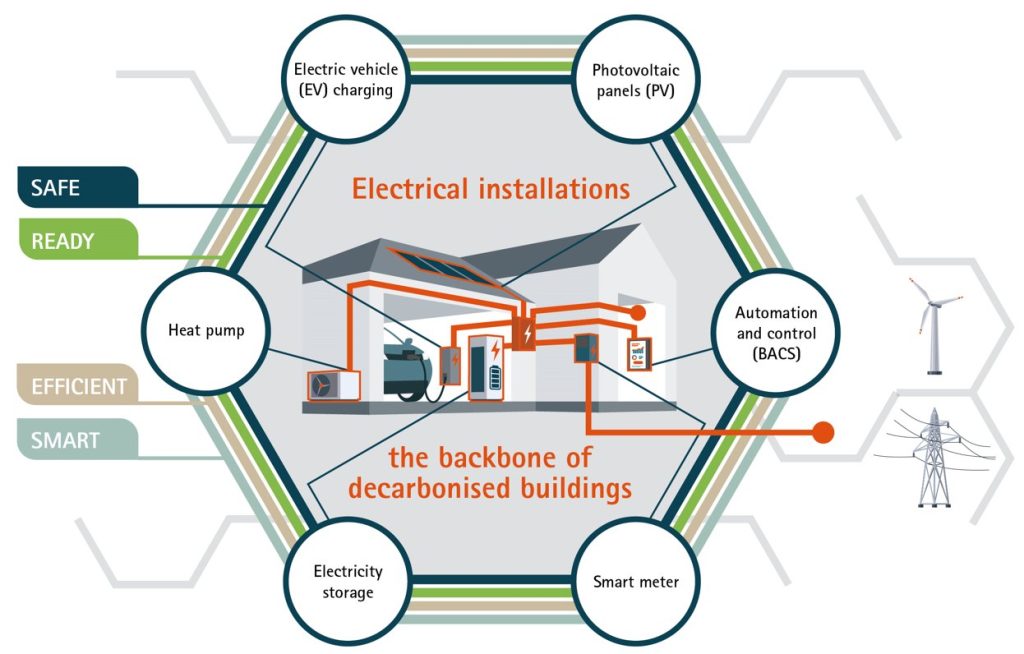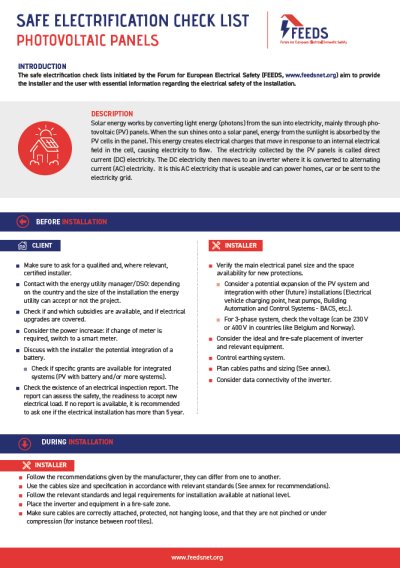FEEDS launches the electrical safety check-lists for photovoltaic panels, heat pumps, energy storage systems and electrical vehicle charging points installation
Driven by the Energy Transition, the electrification will accelerate the development and the installation of heavy loads and electricity production in our domestic environment. With 132 million obsolete electrical installations, the EU needs to bring a special attention to the safety and readiness of domestic electrical installations to succeed into that critical turn.
Electrical installations are essential to achieve the energy transition objective. They play an essential role in the energy performance of buildings, enabling the efficient consumption and production of renewable energy and facilitating system integration. As electrification is expected to play a central role in buildings’ efficiency and their ability to interlink various aspects of our energy systems, reliable and adequately dimensioned electrical systems are a pre-requisite to integrate the energy performance devices already available today, such as photovoltaic panels, heat pumps, energy storage systems or electrical vehicle charging points.

Electrical installations are central systems for buildings evolution. They must be safe, ready, efficient and smart to integrate future systems and functions © International Copper Association Europe
Due to this central role in the decarbonisation of buildings and the state of the European stock as assessed by FEEDS, electrical installations need particular attention: the main safety issue with adding new electrical loads or electricity production into a domestic environment is not with the safety of these devices and equipment but when the electrical installation to which they are added is obsolete or unsuitable.

This is why FEEDS publishes the electrical safety check lists which aim to draw attention on key actions to be taken to be successful with the deployment of high load or electrical production installations in the domestic area. The check lists concentrate only on common denominators as general approach and are designed to be understood by a large audience: client, installers and regulators/legislators.
👉 Browse the checklists now!
